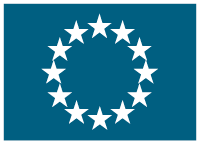Uncovering the origins of friction
(UFO)
Start date: Sep 1, 2009,
End date: Aug 31, 2014
PROJECT
FINISHED
Nanotechnology is a new frontier in research and new tools must be developed. As surface to volume ratios become large, engineering at the nanoscale will be dominated by surface science. The study of Contact Mechanics at nanoscales nanotribology- needs to fully account for adhesive forces, third-body interactions and deformation mechanisms at contacting asperities. Understanding these factors as well as the morphological evolution of contact clusters has the potential of explaining the origins of frictional forces and wear. This will guide us in the design of tailored-made lubricants and surface morphologies, which, in turn, will help reduce the high societal cost of wear damage. This ERCstg proposal describes a plan to establish a world-leading group in Contact Mechanics at length scales ranging from the atomic to macroscopic scales relevant to Civil or Mechanical Engineering structural applications. Our approach will have recourse to molecular dynamics coupled with the finite-element method for an accurate description of atomic interactions at the contact surface, and of long-range elastic forces. The project is interdisciplinary as the deepening of our understanding of Contact Mechanics will necessitate Computer Science developments. A central objective of the research will be the release of an open, 3D parallel, finite-element platform dedicated to contact applications. The PI will assemble a team of Engineers and Computer Scientists to ensure a successful and perennial diffusion in the European academic and industrial network. The research will therefore explore the origins of friction, a scientific quest of fundamental importance to many industrial applications, and will also create a stable base for sharing scientific-computing resources.
Get Access to the 1st Network for European Cooperation
Log In
or
Create an account
to see this content
Details
- 100% € 1 773 000,00
-
 FP7-IDEAS-ERC
FP7-IDEAS-ERC
- Project on CORDIS Platform
ECOLE POLYTECHNIQUE FEDERALE DE LAUSANNE
€ 1 773 000,00- Caroline Vandevyver
- BATIMENT CE 3316 STATION 1 1015 LAUSANNE (Switzerland)